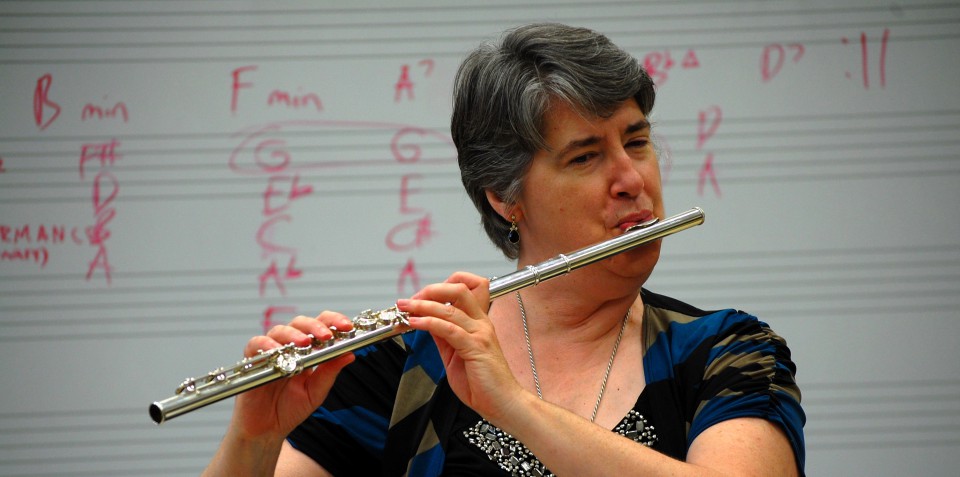 It’s been a banner year at Dr. Cate’s Flute Tips, nearly doubling the number of views of the previous three years just this year alone. There are now 100 different articles on all aspects of embouchure, tone production, hand and body position and teaching beginners. There are more new posts coming up in the new year. Your suggestions and comments are always welcome. With no further ado, the top ten posts for 2017 are:
It’s been a banner year at Dr. Cate’s Flute Tips, nearly doubling the number of views of the previous three years just this year alone. There are now 100 different articles on all aspects of embouchure, tone production, hand and body position and teaching beginners. There are more new posts coming up in the new year. Your suggestions and comments are always welcome. With no further ado, the top ten posts for 2017 are:
- Flute Embouchure and a Teardrop Top Lip – It’s great that this is the number one post. My hope is that it means more kids will have the opportunity to play the flute rather than being talked out of it because they have a prominent teardrop and need to shape the aperture off-center.
- Teaching Your Students to Play with Vibrato – I believe in waiting a year or two before introducing vibrato to young students. The most important thing is the kids are blowing strongly and have a well shaped embouchure before attempting to learn vibrato
- Helping Your Students Adjust to Playing with Braces – Always a big issue for junior high and high school kids. Not as big a deal as if they play a brass instrument. It’s just a matter of reevaluating the blowing angle to re-establish their characteristic tone
- The Legend of “Kiss and Roll” – This teaching “method” needs to disappear. If there is any one thing that is an obstacle to developing a rich, characteristic sound, it is learning to blow on the flute by rolling it down into place rather than bringing it up from below. Ask your resident flute teacher/player
- About the Third Octave – If you teach your students to maintain the size of the aperture and keep the blow hole sufficiently open, 60-75%, and blow fast enough air (different than quantity of air) at every dynamic, the third octave will be easy
- To Roll or Not to Roll: That is the Question – If students learn to change the blowing angle rather than rolling the flute, flute players around the country and the world will play more easily in tune. Rolling has such a negative impact on tone quality, as well as pitch
- The Very First Notes – The truth for flute players is that if you develop a strong, focused low register first, the second and third octaves will be a breeze to learn and playing in tune will happen more naturally. I’m well aware that the major band methods start in the middle and work outwards, but the flute is a different beast than the other winds and brass
- Finding the Sweet Spot – There isn’t a one size fits all solution for embouchure and tone production with the flute. Teach your students how to experiment with the parameters of blowing angle and placement on their lip and they will develop a characteristic sound more quickly
- Everything You Ever Wanted to Know About Trills – When I do sectional rehearsals and clinics, it makes me nuts that kids will just wiggle whatever rather than go through the process of understanding what note is being trilled to which note, either a whole or half step, depending on the key. Teach them to use a trill chart
- Warm Air, Cold Air: Sense or Nonsense – Along with rolling to correct intonation and the “Kiss and Roll”, the warm air/cold air explanation for low and high notes is one of the silliest and least true thing we tell kids about how blowing on the flute works. It’s simple. If the aperture is open enough for the air to be warm, the air is moving too slowly to make a good sound. It will be fuzzy and unfocused.
Thank you for reading Dr. Cate’s Flute Tips. It is so gratifying to hear from all of you that you find the blog useful to you. New things in development include some more posts on pedagogy, products I endorse and use in my teaching and playing, a book of tone and technique exercises just for band flute players that can be used in sectionals and individual home practice, and industry sponsorship. Dr. Cate’s Flute Tips would not be possible without the support of KHS America and their flute brands: Altus, Azumi and Jupiter flutes.
As always, if you find these entries useful, please subscribe, share with your colleagues and come back regularly. Feel free to comment. If you have a topic you would like to see explored more fully, you can contact me via IM/Messenger on Facebook or email me at dr_cate@sbcglobal.net. For information about clinics, workshops and performances, click here.

Very helpful tips to learn how to play the flute whether you are a beginner or expert. Thanks for sharing these!
LikeLike
This has been one of the most popular blog posts of the year. We regularly receive questions from product managers about all manner of career-related topics. In fact, we have an entire blog category dedicated to career-focused articles. We also recently published a free (140 page!) Career Guide for Product Managers to distill some of the insights we’ve collected over the years.
LikeLike
Thank you for sharing Dr. Cate’s flute tips
LikeLike